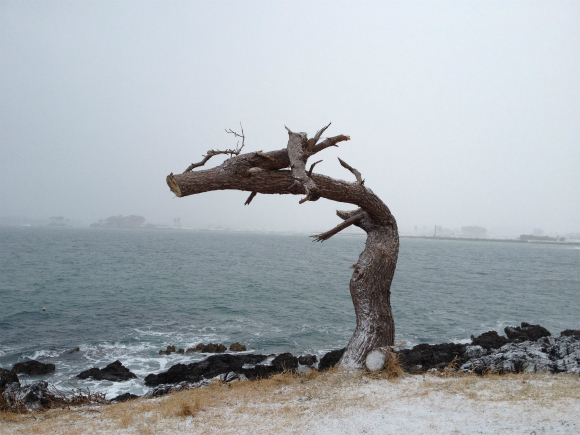
Iwai-saki is a beautiful cape surrounded by pine trees located at the southern end of Rikuchu Seacoast National Park in Kensennuma city, Miyagi prefecture.
While the area around the cape is now still and peaceful, large sections of Kensennuma city were destroyed and hundreds of lives lost in the tsunami and fires triggered by the Great East Japan Earthquake last March.
While Kensennuma has a long road to recovery ahead of it, the city is said to be experiencing an increase in visitors recently who come to see a lone pine tree twisted in the shape of a dragon that stands alone on a beach of Iwai-saki.
We travelled to Kensennuma with camera in hand to see the scene for ourselves.
Iwai-zaki is roughly 10km away from the center of Kensennuma by car, and we happened to visit the same day a giant cold wave hit Japan and the road was slippery and white with snow.
As we approached the cape, we were presented with a barren scenery including several buildings that had been devestated by the tsunami.
After safely reaching our destination, we walked out into the snow and the pine tree soon came into our sight.
2012 is the year of the dragon and this March will mark the 1 year anniversary of the disaster. Given this timing and location, it’s no wonder this tree has become known all over Japan. I myself couldn’t help but see a dragon bursting forth mightily from the earth to watch over Kensennuma.
The dragon tree has become a symbol of recovery to the city and its image is even being printed on postcards. By becoming a tourist spot, perhaps the dragon of Kensennuma will bring back some much-needed fortune to the city.
Pictures: RocketNews24, Yoshio
[ Read in Japanese ]

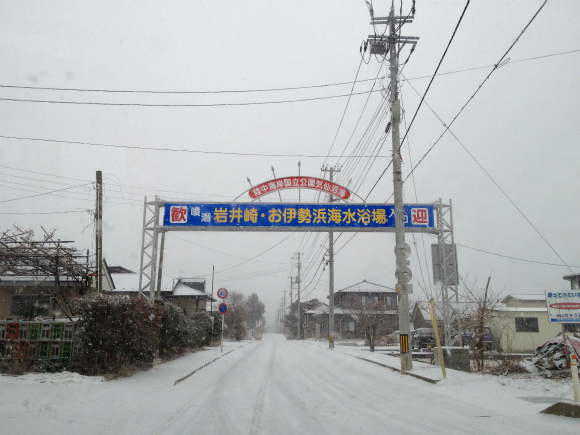
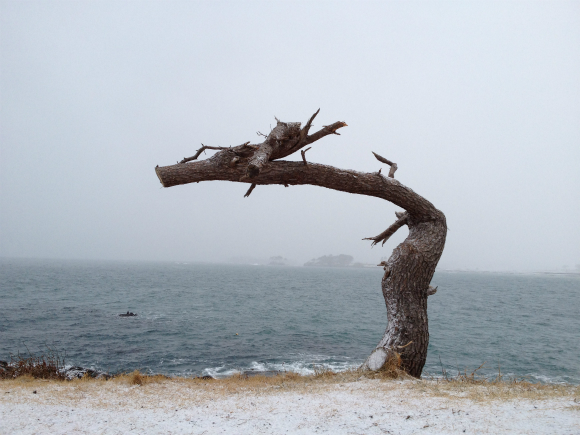
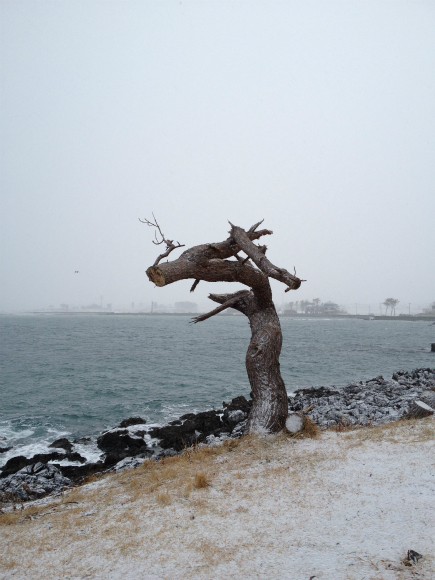
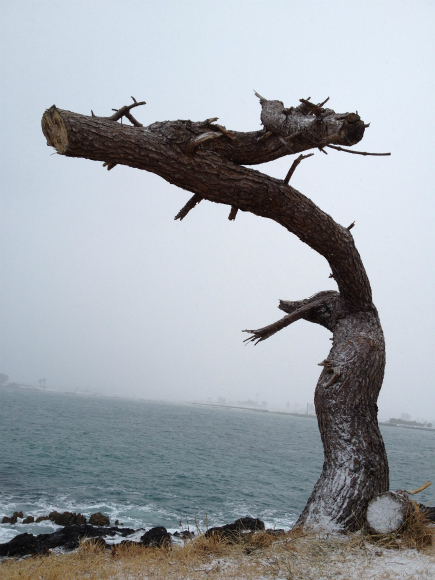
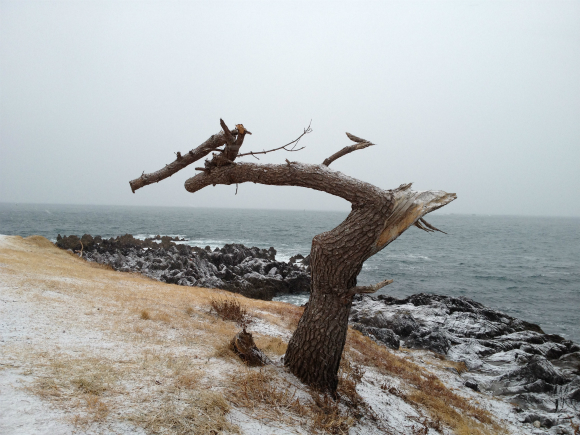
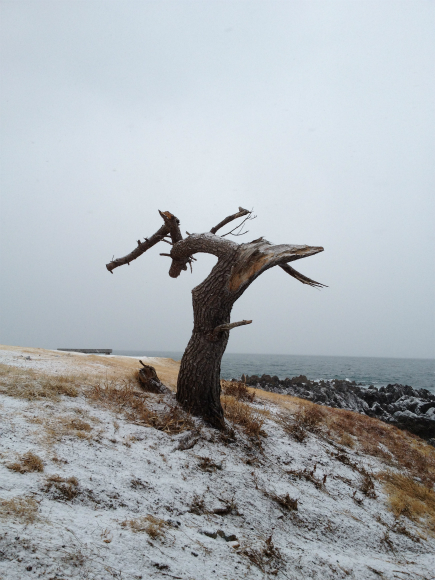
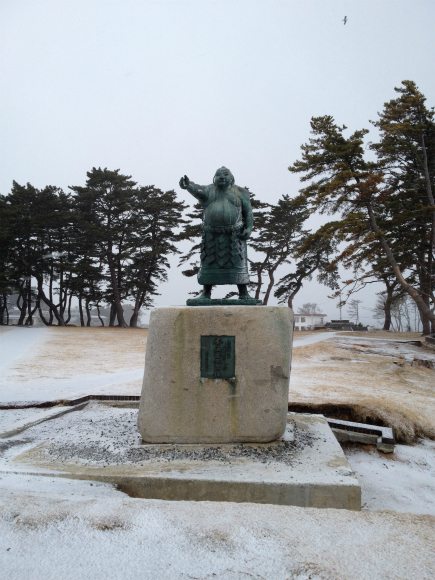
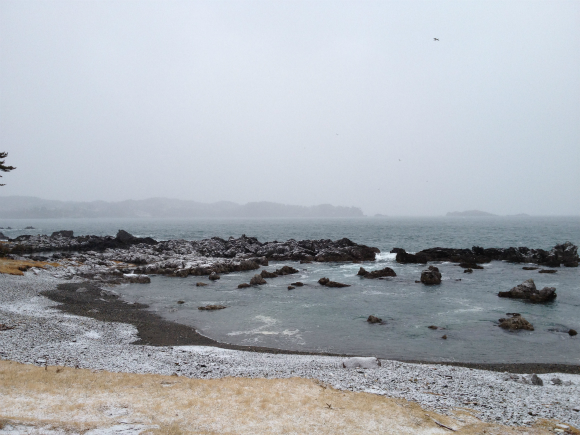
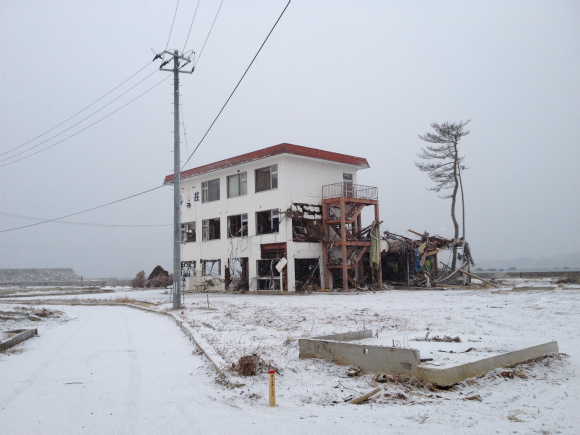
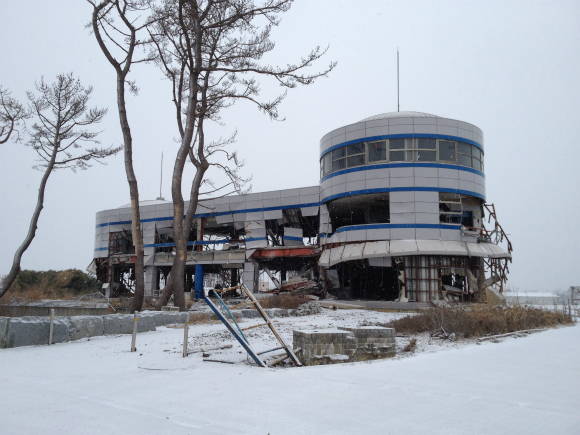
 There’ll be hell toupee after devil winds cause hair-raising mayhem across Japan
There’ll be hell toupee after devil winds cause hair-raising mayhem across Japan Pink sakura season comes to IKEA store restaurants and cafes across Japan
Pink sakura season comes to IKEA store restaurants and cafes across Japan Special limited-time Frozen II-inspired menu items arriving in cafes across Japan
Special limited-time Frozen II-inspired menu items arriving in cafes across Japan Baked Kit Kats now showing up in cakes, parfaits, and crepes across Japan
Baked Kit Kats now showing up in cakes, parfaits, and crepes across Japan Hot and handsome rickshaw pullers poised to become the newest crush of women across Japan
Hot and handsome rickshaw pullers poised to become the newest crush of women across Japan Disney princesses get official manga makeovers for Manga Princess Cafe opening in Tokyo
Disney princesses get official manga makeovers for Manga Princess Cafe opening in Tokyo Beautiful new Final Fantasy T-shirt collection on the way from Uniqlo【Photos】
Beautiful new Final Fantasy T-shirt collection on the way from Uniqlo【Photos】 Randomly running into a great sushi lunch like this is one of the best things about eating in Tokyo
Randomly running into a great sushi lunch like this is one of the best things about eating in Tokyo Foreign English teachers in Japan pick their favorite Japanese-language phrases【Survey】
Foreign English teachers in Japan pick their favorite Japanese-language phrases【Survey】 Starbucks adds a matcha and pistachio milk tea latte to the menu in Japan for a limited time
Starbucks adds a matcha and pistachio milk tea latte to the menu in Japan for a limited time Hungry and on the go? Top 10 ranking of ekiben at Tokyo’s Shinagawa Station
Hungry and on the go? Top 10 ranking of ekiben at Tokyo’s Shinagawa Station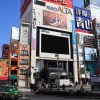 One of Tokyo’s most famous meeting-spot landmarks is closing for good
One of Tokyo’s most famous meeting-spot landmarks is closing for good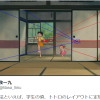 Manga artist raises question online about false perspective in Ghibli film My Neighbor Totoro
Manga artist raises question online about false perspective in Ghibli film My Neighbor Totoro These apartments are crazy-small even by Tokyo standards, and super-popular with young people
These apartments are crazy-small even by Tokyo standards, and super-popular with young people Osaka’s creepy cute mascot speaks for first time, adds more fuel the creepy OR cute debate【Video】
Osaka’s creepy cute mascot speaks for first time, adds more fuel the creepy OR cute debate【Video】 We try out “Chan Ramen”, an underground type of ramen popular in the ramen community
We try out “Chan Ramen”, an underground type of ramen popular in the ramen community New Studio Ghibli bedding sets are cool in all senses of the word
New Studio Ghibli bedding sets are cool in all senses of the word Our Japanese reporter visits Costco in the U.S., finds super American and very Japanese things
Our Japanese reporter visits Costco in the U.S., finds super American and very Japanese things New Pokémon cakes let you eat your way through Pikachu and all the Eevee evolutions
New Pokémon cakes let you eat your way through Pikachu and all the Eevee evolutions There’s a park inside Japan where you can also see Japan inside the park
There’s a park inside Japan where you can also see Japan inside the park Japanese convenience store packs a whole bento into an onigiri rice ball
Japanese convenience store packs a whole bento into an onigiri rice ball Hanton rice — a delicious regional food even most Japanese people don’t know about, but more should
Hanton rice — a delicious regional food even most Japanese people don’t know about, but more should Final Fantasy, Kingdom Hearts, and Dragon Quest pet product line announced by Square Enix
Final Fantasy, Kingdom Hearts, and Dragon Quest pet product line announced by Square Enix Studio Ghibli releases Kiki’s Delivery Service chocolate cake pouches in Japan
Studio Ghibli releases Kiki’s Delivery Service chocolate cake pouches in Japan Japan’s bone-breaking and record-breaking roller coaster is permanently shutting down
Japan’s bone-breaking and record-breaking roller coaster is permanently shutting down New definition of “Japanese whiskey” goes into effect to prevent fakes from fooling overseas buyers
New definition of “Japanese whiskey” goes into effect to prevent fakes from fooling overseas buyers Foreign passenger shoves conductor on one of the last full runs for Japan’s Thunderbird train
Foreign passenger shoves conductor on one of the last full runs for Japan’s Thunderbird train Kyoto bans tourists from geisha alleys in Gion, with fines for those who don’t follow rules
Kyoto bans tourists from geisha alleys in Gion, with fines for those who don’t follow rules Studio Ghibli unveils Mother’s Day gift set that captures the love in My Neighbour Totoro
Studio Ghibli unveils Mother’s Day gift set that captures the love in My Neighbour Totoro Domino’s Japan now sells…pizza ears?
Domino’s Japan now sells…pizza ears? Toyota built a life-sized Miraidon Pokémon and are letting people test drive it this weekend
Toyota built a life-sized Miraidon Pokémon and are letting people test drive it this weekend New Japanese KitKat flavour stars Sanrio characters, including Hello Kitty
New Japanese KitKat flavour stars Sanrio characters, including Hello Kitty Sales of Japan’s most convenient train ticket/shopping payment cards suspended indefinitely
Sales of Japan’s most convenient train ticket/shopping payment cards suspended indefinitely Sold-out Studio Ghibli desktop humidifiers are back so Totoro can help you through the dry season
Sold-out Studio Ghibli desktop humidifiers are back so Totoro can help you through the dry season Japanese government to make first change to romanization spelling rules since the 1950s
Japanese government to make first change to romanization spelling rules since the 1950s Ghibli founders Toshio Suzuki and Hayao Miyazaki contribute to Japanese whisky Totoro label design
Ghibli founders Toshio Suzuki and Hayao Miyazaki contribute to Japanese whisky Totoro label design Doraemon found buried at sea as scene from 1993 anime becomes real life【Photos】
Doraemon found buried at sea as scene from 1993 anime becomes real life【Photos】 Tokyo’s most famous Starbucks is closed
Tokyo’s most famous Starbucks is closed One Piece characters’ nationalities revealed, but fans have mixed opinions
One Piece characters’ nationalities revealed, but fans have mixed opinions We asked a Uniqlo employee what four things we should buy and their suggestions didn’t disappoint
We asked a Uniqlo employee what four things we should buy and their suggestions didn’t disappoint Princesses, fruits, and blacksmiths: Study reveals the 30 most unusual family names in Japan
Princesses, fruits, and blacksmiths: Study reveals the 30 most unusual family names in Japan Studio Ghibli’s new desktop Howl’s Moving Castle will take your stationery on an adventure
Studio Ghibli’s new desktop Howl’s Moving Castle will take your stationery on an adventure Over 19,000 Azuki Bars for free on 1 July at select locations across Japan
Over 19,000 Azuki Bars for free on 1 July at select locations across Japan Tokyo Olympics opening ceremony preliminary ticket prices announced, wallets cry across Japan
Tokyo Olympics opening ceremony preliminary ticket prices announced, wallets cry across Japan Sad news: 1,266 famous Tokyo plum trees get the axe to prevent spread of “plum pox”
Sad news: 1,266 famous Tokyo plum trees get the axe to prevent spread of “plum pox” Hokkaido has an otherworldly giant hot spring that’s easy to miss if you don’t know where it is
Hokkaido has an otherworldly giant hot spring that’s easy to miss if you don’t know where it is Tohoku man honors brother killed in tsunami with hundreds of blue carp streamers
Tohoku man honors brother killed in tsunami with hundreds of blue carp streamers Ramen donburi rice bowl series with Edogawa Ranpo references released
Ramen donburi rice bowl series with Edogawa Ranpo references released Which parts of Ishikawa are OK to travel to after Noto quake? Government shares guideline map
Which parts of Ishikawa are OK to travel to after Noto quake? Government shares guideline map Oregon as a Studio Ghibli film – Gorgeous tourism video shows the state as a Miyazaki wonderland
Oregon as a Studio Ghibli film – Gorgeous tourism video shows the state as a Miyazaki wonderland Don’t forget: Yahoo! Japan to make disaster relief donation for every person who searches for “3.11” today
Don’t forget: Yahoo! Japan to make disaster relief donation for every person who searches for “3.11” today Disaster-struck region aims to increase tourism by bringing ALL region-exclusive Pokémon to Japan
Disaster-struck region aims to increase tourism by bringing ALL region-exclusive Pokémon to Japan Ice Cream with Baby Star Ramen noodles only available from UFO catchers across Japan
Ice Cream with Baby Star Ramen noodles only available from UFO catchers across Japan Living Christmas tree starts “Uber Illumination” service from Tokyo
Living Christmas tree starts “Uber Illumination” service from Tokyo Where will you go this summer? Here are the top 10 Japanese swimming spots with the nicest water
Where will you go this summer? Here are the top 10 Japanese swimming spots with the nicest water
Leave a Reply